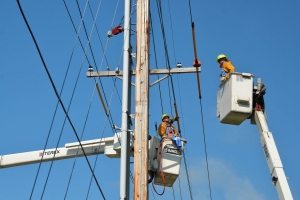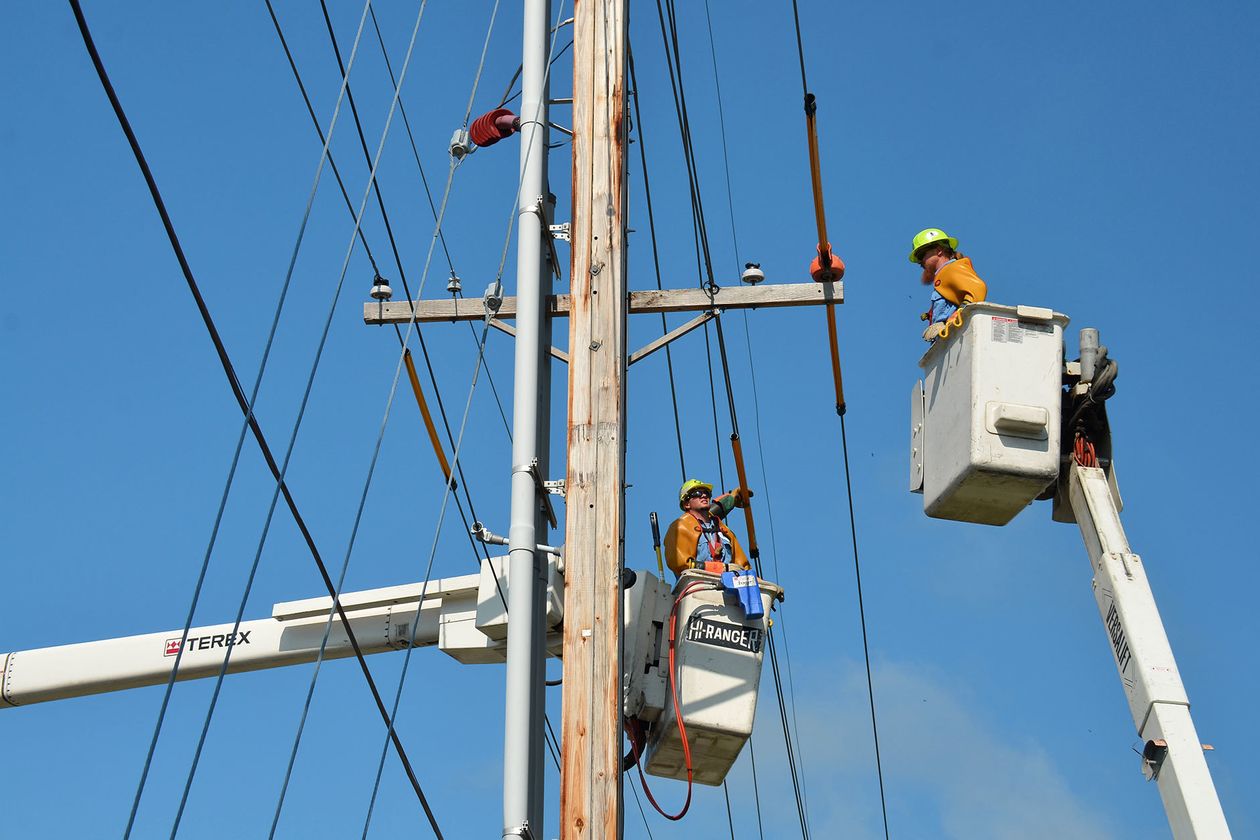How to Keep Consumers’ Lights On: Send the Electric Bill to the Feds
from barrons.com
How to Keep Consumers’ Lights On: Send the Electric Bill to the Feds
 It is difficult for any of us to comprehend the magnitude of the economic crisis flowing from the coronavirus pandemic, let alone predict when or how a safe and orderly return to normalcy can be achieved. One economic reality is inescapable: The rents and bill payments of one American family are the income of another, and this circular flow has been broken. Circular flow needs to be re-established quickly and efficiently, or the loss will be magnified as liquidity issues are transmitted throughout the economy.
It is difficult for any of us to comprehend the magnitude of the economic crisis flowing from the coronavirus pandemic, let alone predict when or how a safe and orderly return to normalcy can be achieved. One economic reality is inescapable: The rents and bill payments of one American family are the income of another, and this circular flow has been broken. Circular flow needs to be re-established quickly and efficiently, or the loss will be magnified as liquidity issues are transmitted throughout the economy.
The good news is lawmakers have largely risen to the occasion with bipartisan agreement that the unprecedented nature of this crisis requires an unprecedented economic response. While the initial fiscal stimulus package was swift and well-intentioned, there is growing evidence that it was inadequate and has been hampered by infrastructure constraints.
Consider the data over the past month. Employment is down about 15%, but consumer purchases are down almost twice as much, and gross domestic product is falling at a rate estimated to be as high as 40%. This in the face of a relief package sized to more than equal the expected decline in GDP over three months. That means the current relief efforts are not being transmitted throughout the economy. Circular flow has unfortunately been replaced by stagnation.
In the next round, the federal government must focus on expediency and efficiency, and the best way to do that is to use existing relationships to channel relief directly to consumers, not create new ones. The most effective way to keep the lights on in every American household and small business is to make direct payments to cover these bills. Directly paying consumers’ utility and telecommunications expenses would provide immediate assistance at a price tag of about $60 billion per month.
If Washington wants to take it one step further, the federal government could agree to pay a limited portion of new credit card purchases of essential goods such as groceries, gas, and medicine. This “payment protection” guarantee would allow consumers to continue to purchase the essentials without taking on new debt or missing payments on other bills.
Delivering assistance through direct payments would allow the federal government to immediately disperse huge amounts of stimulus in a targeted, scalable way without having to get money to hundreds of millions of people in a process that is going to take weeks, if not months. Lawmakers can simply tell utility providers and credit card companies to bill the Treasury directly for these expenses. Once such a program becomes law, the buying power of every American household increases instantly, as does the liquidity of every service provider. And circular flow will be re-established as money flows from households to businesses as a matter of course.
Another benefit of direct payments is that there are existing mechanisms in place to monitor spending patterns to detect fraud or misuse. Moreover, these payments are both predictable and scalable, enabling lawmakers the flexibility to adjust the program based on how quickly the country can safely return to normal. A side benefit would be to disproportionately benefit lower-income households since fixed costs like utilities and essentials represent a greater proportion of their monthly expenses.
A similar way to provide direct aid to small businesses would be for the government to agree to finance an expansion of the business-interruption benefits of existing insurance policies. Those policies document the calibrated needs of many small businesses to survive a shutdown. There is no need to guess what is required to maintain them until the economy reopens. Again, this comes with a built-in audit function, and the reliance on existing contracts greatly reduces the potential for abuse.
To make any program truly effective, lawmakers need to separately consider the millions of Americans who cannot access credit through the commercial banking system. As many as one quarter of U.S. households are either unbanked or underbanked, and nearly 60% of small businesses use their credit cards to finance their operations. These customers rely on nonbanks to access financial services and products.
The federal government’s actions to date have largely ignored the health of the nonbank sector and failed to recognize that these companies have different business models than commercial banks. Lawmakers need to give more thought to preserving nonbanks and using their customer access to provide an additional channel for quickly distributing relief. If these businesses do not survive the coronavirus downturn, their customers will not be able to participate in the recovery when it comes.
Until we get greater clarity on how we’ll achieve a return to normalcy, lawmakers should focus on ensuring that we can all keep the lights on.
Howard Newman holds a doctorate in business economics from Harvard University and has served as a board director for over 45 companies. He is a co-founder and managing partner of the private investment firm Pine Brook, and a trustee of the Salk Institute for Biological Studies.

